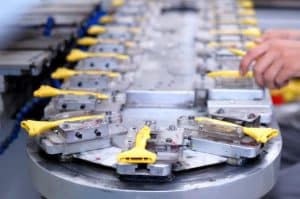Lane Centering Technology: How It Works and Why It Matters
Picture this scenario: you’re driving down the highway, cruising along at a comfortable speed. Suddenly, you drift a little too close to the edge of your lane, causing your car to beep loudly and shake the steering wheel. You quickly correct course and continue on your journey, but not before feeling a twinge of relief that your car’s lane departure warning system saved you from a potential accident. Now imagine if your car could do more to prevent lane drifting and keep you safely in your lane. That’s where lane centering technology comes into play.
What is Lane Centering Technology?
Lane centering technology, also known as lane keeping assist, is an advanced driver assistance system (ADAS) that helps drivers stay in their lane on the road. It works in conjunction with other safety features, such as lane departure warning and adaptive cruise control, to provide a more seamless and autonomous driving experience. By using a combination of cameras, sensors, and software, lane centering technology can detect lane markings and make small steering adjustments to keep your car centered in its lane.
How Does It Work?
There are a few key components that make up lane centering technology. First, there’s a camera mounted on the windshield that constantly scans the road ahead for lane markings, typically using visual recognition algorithms. This information is then sent to a control unit, which processes the data and determines the distance and direction the car is traveling in relation to the lane markings. Finally, the control unit sends signals to the steering system, which makes slight adjustments to keep the car centered in its lane.
Some more advanced lane centering systems also use radar or lidar sensors to supplement the camera’s information. These sensors can provide more accurate data, especially in adverse weather conditions, and improve the system’s overall performance.
Why Does It Matter?
So why is lane centering technology so important? For one, it can greatly enhance safety on the road. By helping drivers stay in their lane, it reduces the risk of accidents caused by lane drifting or drowsy driving. This is especially crucial for long drives on highways, where monotony and fatigue can lead to decreased driving performance. It can also assist drivers with disabilities or those who may have trouble staying centered in their lane.
Moreover, lane centering technology paves the way for self-driving cars in the future. By perfecting this feature, car manufacturers are one step closer to creating fully autonomous vehicles. Tesla, for example, has already started implementing its Autopilot system, which includes lane centering technology, in its cars and is working towards achieving full self-driving capability.
Another benefit of lane centering technology is increased comfort and convenience. Instead of constantly having to adjust your steering to stay in your lane, you can relax and let the system do the work. This can reduce driver fatigue and make long drives more enjoyable. Plus, for those who are new to driving or have trouble with spatial awareness, lane centering technology can provide a sense of security and make driving less stressful.
The Future of Lane Centering Technology
As with any new technology, there is always room for improvement and growth. Lane centering technology is continuously evolving and becoming more advanced. In the near future, we can expect to see more cars with this feature as it becomes a standard in new vehicle models. Some experts also predict that the technology will expand to include lane changing and merging capabilities, making driving even more effortless for drivers.
In conclusion, lane centering technology is a game-changer in terms of safety, comfort, and the future of cars. As it continues to advance and manufacturers perfect its capabilities, we may one day see a world where cars are able to drive themselves, making our roads safer and our driving experience more enjoyable.



